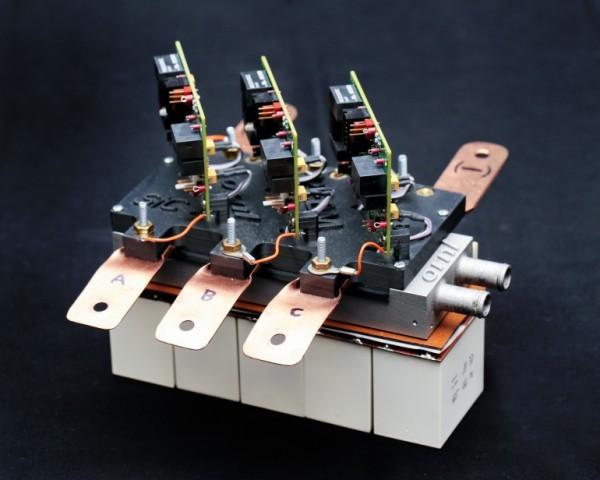A new power inverter developed at the Oak Ridge National Laboratory (ORNL) marries advances in 3D printing and wide-band semiconductor technology to deliver significantly improved performance in a smaller, lighter package. With further development, it could go a long way toward helping build electric cars that are more powerful and energy-efficient.
Power inverters are an essential part of any electric vehicle, as they take the direct current stored in the battery pack and turn it into AC that feeds the motor. Making them as small and light as possible is an area well worth focusing on. Even Google’s in on it, having recently instituted a US$1 million prize for the best inverter designed to take DC from solar arrays and wind turbines and convert it into AC for domestic use. Of course, reducing that footprint becomes even more important when room is at a premium, such as aboard an electric car.
The inverter designed at ORNL achieves a very significant improvement in terms of power density, weight and volume. As lead investigator Dr. Madhu Chinthavali tells us, the 20 kW device that his team designed has a total volume of only around 1,500 cc (91 cubic inches) and weighs around 1.75 kg (3.85 lb). For reference, this is over four times the already aggressive power density requirements for Google’s prize.
“20 kW was the highest rating that the inverter was tested up to,” Chinthavali tells Gizmag. “This is actually more than a 30 kW inverter by design; we are being conservative because of the voltage levels that the DC-link can boost up to for automotive applications.”
This advance was achieved in great part because of the properties of silicon carbide, a so-called “wide-band semiconductor.” These are high-grade materials that are very well-suited for high power applications and for working under a wider range of temperatures, which is especially relevant in EVs. As a result, the device is achieving a higher levels of efficiency, to the order of 99 percent, though this number will fluctuate depending on actual operating conditions.
The other major performance driver was the use of 3D printing to build about half of the inverter’s parts, which allowed the scientists to reduce weight and be much more flexible in their design. Specifically, the researchers designed a higher-performance heat sink by placing lower-temperature components next to high-temperature ones, and allowing for better heat transfer throughout the device. Another design change was the use of an array of small, interconnected capacitors instead of a few big ones, to reduce cost and further improve cooling.
For more detail: New power inverter could make EVs more powerful and efficient

